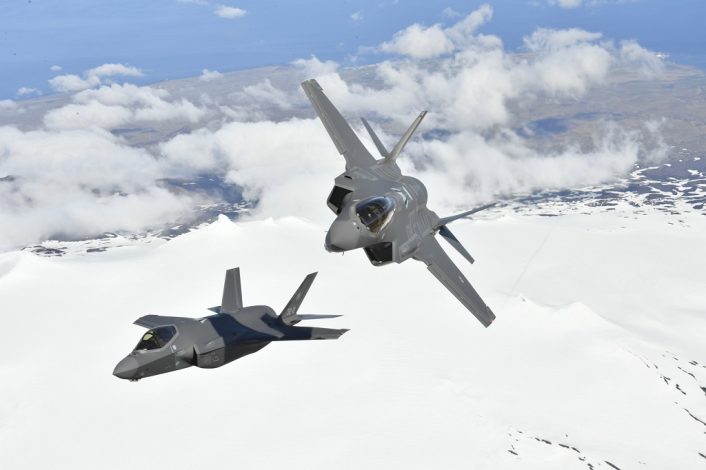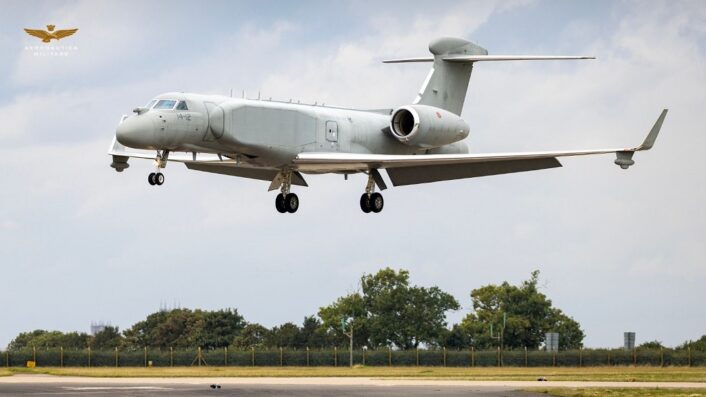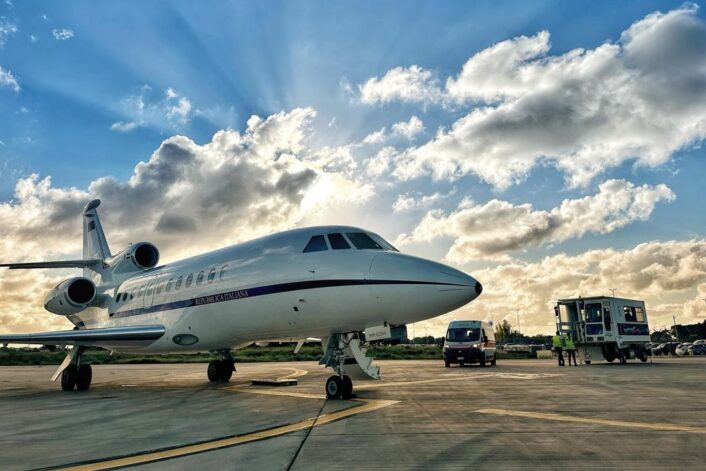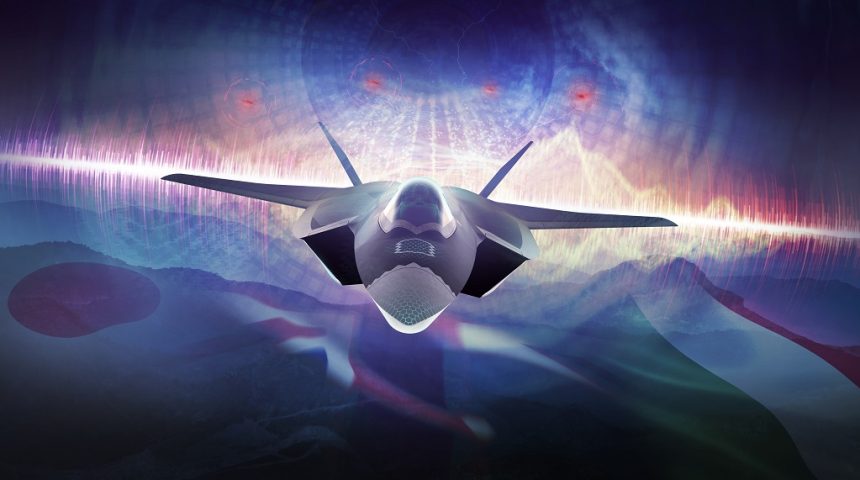The Italian MoD is committed on the modernization effort started in the last few years, with investments in many areas that will also sustain the national industry, but also some unexpected ones.
A bit later than usual, the Italian government published few days ago the new multiyear defense planning document (Documento Programmatico Pluriennale della Difesa) for 2023-2025, which illustrates the funding needed by the Italian military to sustain and modernize its forces. As in the recent years’ editions of the document, Italy remains committed to the many important investments towards the modernization, but let’s proceed in order.
The strategic situation is based, yet again, on a reference scenario, called the “extended Mediterranean” region, a highly volatile multidomain system which is place for encounters and clashes where important international actors are becoming increasingly aggressive, with a negative downfall on the social and economic contexts and the national security. This is the result of the geopolitical and geostrategic changes of the last few years, which led to an increase of the antagonisms, alliances of convenience and a progressive loss of relevance of international organizations.
Today we find ourselves in an increasingly complex and instable world, in which great political, military and economic powers with a global vocation are standing out and intend to question the world security structure. The escalation in the inter-state relations has changed, moving from a peace-crisis-conflict model to a competition-crisis-conflict one, resulting in a continuum competition situation dominated by pervasive instability.
The systemic shock caused by the Ukrainian crisis changed the international relations and the perception of security and defense in Europe, emphasizing the increasing strategic global competition. This resulted, in turn, to a renovated attention to the modernization of armed forces and the revision of the energy supply chain.
Let’s now talk about the programs in place to reach the objectives of this year’s Defense planning, beginning from the new programs being launched.

Confirming the importance of the space domain, one of the first joint programs mentioned in the document is a Low Earth Orbit satellite constellation for communications and high-rate data relay. These satellites will support the digitalization of the armed forces, as well as creating an exchange network between government satellites and increasing the resiliency of the national communication networks.
Another important mention goes to the Future Cruise and Anti-Ship Weapon (FC/ASW), with Italy set to join France and United Kingdom to develop a new anti-ship capability from 2034 and a new deep strike capability from 2028. With the concept phase completed, the program is now well into the assessment phase and, according to the available info, is currently deploying a low observable subsonic variant and a supersonic one. The new weapon will replace the Storm Shadow/SCALP used by the three nations, as well as the Exocet and Harpoon missiles used, respectively, by France and UK.
Two almost unexpected acquisitions for the Italian MoD are the Leopard 2 Main Battle Tank and the M142 HIMARS. The Army is, in fact, looking to replace Ariete and Leopard 1 tanks with the latest generation Leopard tank, possibly the 2A8 variant, granting a high logistics commonality with most weapon systems in Europe and creating advantageous conditions for a future participation to the European MBT project. This program will be concurrent with the modernization that will bring the Ariete MBT to the C2 standard.
The acquisition of the HIMARS (High Mobility Artillery Rocket System) is finalized to increase the deep and precision strike capabilities of the Italian Army. The system, transportable on the C-130 cargo aircraft, will also allow increased expeditionary capabilities while maintaining the commonality with the MLRS family of weapons. The program will be concurrent with the modernization of the M270 MLRS currently in service.
The Army is also focused on the Armored Infantry Combat System that will replace the current VCC-80 Dardo with a new modular and networked Infantry Fighting Vehicle. The development is being considered in a multinational approach, with the CV90 and Lynx IFVs being among the candidates. The Very Short Range Air Defence will be completely renovated, both in MANPADS (Man Portable Air Defense System) and vehicle-mounted variants. Both will employ the same munition and will be integrated in the national integrated air and missile defense.
The Navy is investing on the development of the Marte ER antiship missile, improved variant of the current Marte Mk2S and will equip the SH-90 and SH-101 fleets. The missile has been eyed in the past as the future antiship weapon of the Eurofighter 2000, however there is no mention of the integration on the aircraft in the document. The planning also mention the acquisition of an embarked remotely piloted aircraft capability without providing much details, however the photo used shows the older variant of the AWHero UAS.

For the Air Force, the first important new program mentioned is the feasibility study for an air-launched space launch vehicle to bring small payloads to Low Earth Orbit, as well as deterrence and contrast to orbital threats and vehicles on uncontrolled re-entry. The description mentions that the Air-Launch To Orbit vehicle will be employed by unspecified ItAF assets, with the artwork showing the launch being performed by Eurofighters.
Investments are also being made to further increase the Intelligence, Surveillance and Reconnaissance capabilities with new Remotely Piloted Aircraft produced in Italy, with the intention of employing them in the very short term as capability enhancers to implement and test a new command and control architecture. Another new program about to be launched is the replacement of the fleet of Dassault Falcon aircraft used for the emergency medical transport role. In fact, a sustainability study of the ItAF showed that the replacement can’t be postponed anymore and the service decided to replace the existing aircraft on a one-to-one basis.
Moving to the programs already in progress, we find the leasing of the Spydr aircraft as gap filler until the new intelligence aircraft is operational. According to the document, the program is planned to be completed in 2024. The document plans the funding for the continuation of the works on the MC-27J Praetorian and the EC-27J JEDI. The latter, in particular, is being upgraded to the final Risk Reduction Phase 2 configuration and the plan is to increase the fleet by converting other C-27Js.
Work is continuing also on the second phase of the Next Generation Fast Helicopter study, which is evaluation novel technologies in the helicopter industry, such as pusher propellers, to launch a program similar to the Future Vertical Lift. The program, also known as Joint Future Fast Rotorcraft initiative, has been defined crucial to operate in future scenarios, and Italian officials visited the United States to get to know better the similar U.S. Army’s program.
The new helicopter flight school being established in Viterbo, currently home of the Army’s flight school, is moving forward. The new school will exploit the ItAF’s expertise in this sector, as project lead, with the aim of satisfying the requirement for a joint national training centre for all helicopter pilots, as well as satisfying the requirements for the equivalent civilian licenses and offering training to international partners.
The school will employ the new AW169 Light Utility Helicopter to satisfy the requirements of the phase 3b of the training, exploiting the gradual replacement of the six legacy helicopter fleets with the new helicopter. The project is based around an Integrated Training System (ITS) which will include the LUH and the Ground Based Training System (GBTS), similarly to the one of the International Flight Training School.
Obviously, the Army will continue to work on the LUH program and, the new Leonardo AW249 NEES (Nuovo Elicottero da Esplorazione e Scorta / New Exploration and Escort Helicopter), which is in the middle of an extensive flight test campaign. The MoD expects to procure up to 50 combat support helicopters and 48 attack helicopters, with the latter replacing the AH-129D currently in service.

Further confirming the importance of the space domain, the MoD is continuing to develop the national Space Surveillance and Tracking /Space Situational Awareness capability with the addition of implementation of additional monitoring and control capabilities for the national space assets. Additional space programs being funded are the sustainment of the current surveillance and communication satellites and the development of their third generation.
One of the main activities for the aerospace component of the Command, Control and Communications (C3) is the completion of the acquisition of the Gulfstream G550-based CAEW/BM&C capability, as well as a new Electronic Warfare capability. The program, known as P-MMMS (Piattaforma Multi-Missione, Multi- Sensore/Multi-Mission, Multi-Sensor Platform), is aimed at obtaining a modern asset that can be integrated in a net-centric C4ISTAR architecture and later adapted for multi-domain operations.
The resulting C6ISTAR-EW-enabled assets are the CAEW, Spydr and JAMMS aircraft that have been in the works for some years. Italy is also looking to acquire two EC-37B Compass Call aircraft as part of the P-MMMS program, as the National Armaments Directorate determined it is the only solution capable of satisfying the Electronic Attack requirements.
While it didn’t provide any new details, this year’s document mentions again the Tempest 6th generation fighter aircraft and the wider Future Combat Air System (FCAS) program. Tempest is intended to preserve the dominance of the air combat power by capitalizing the Italian and British participation to the F-35 Joint Strike Fighter program. FCAS is described in the program summary as a system of systems, with an optionally unmanned aircraft, manned-unmanned teaming, advanced sensors and related technologies.
With Italy, UK and Japan having signed the collaboration agreement which defines the next steps needed to deliver the concept phase requirements, a new tranche of funds amounting to € 5.2 billion has been allocated. The MoD mentions that the project will have great implications in the military, technology and digital sectors, which will reflect on the introduction of new technologies and a cultural change for the industry and the STEM competencies of the workforce.
The work on the 5th generation is obviously not stopping, and this year’s description for the F-35 Lightning II program mentions, after the Phase 1 and Phase 2a tranches, the start of the acquisition of the Phase 2b tranche of 35 aircraft, bringing the total to planned 90 aircraft. The document doesn’t mention the ItAF request to restore the original 131 aircraft quota or the latest data about the revenues from the F-35 program on the national industries, however, it mentions that the Phase 2a so far resulted in about 1 billion Euro in savings.









